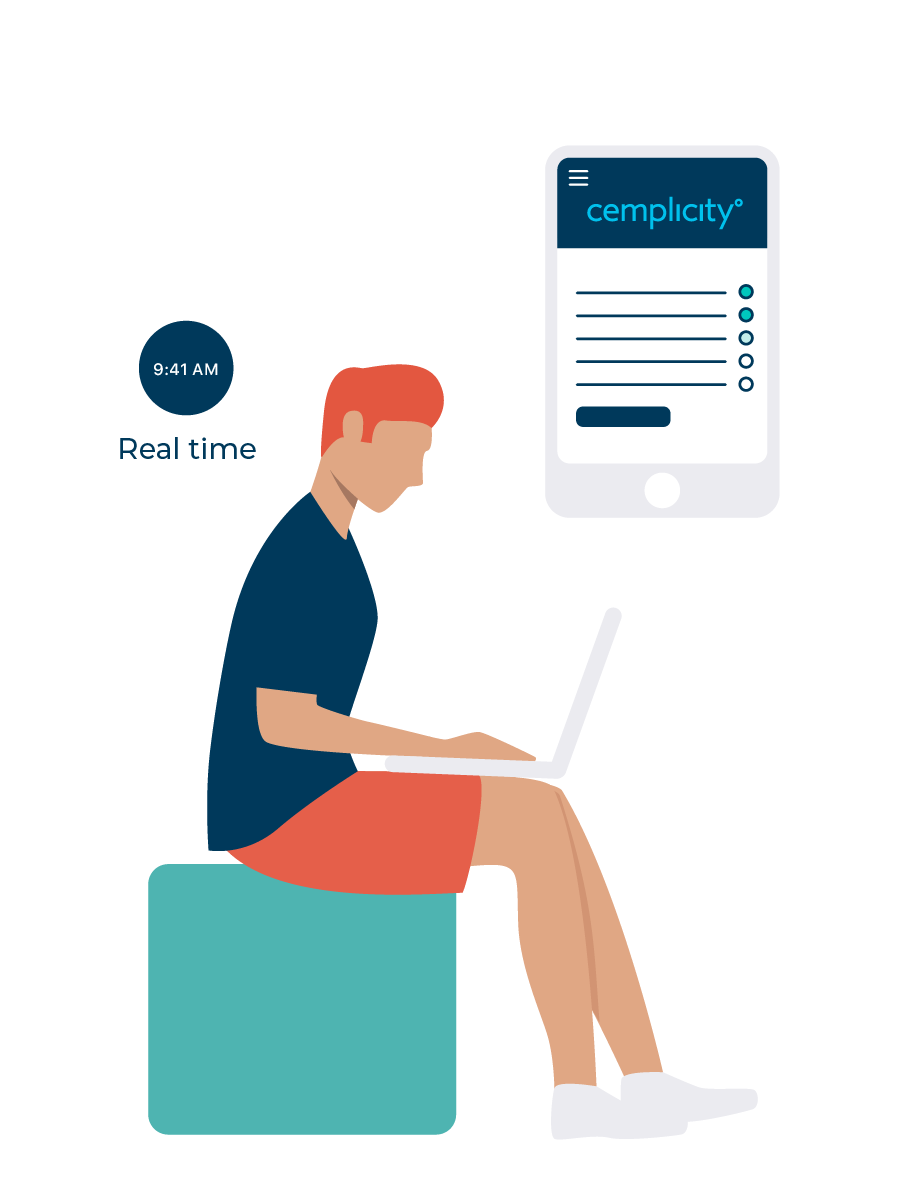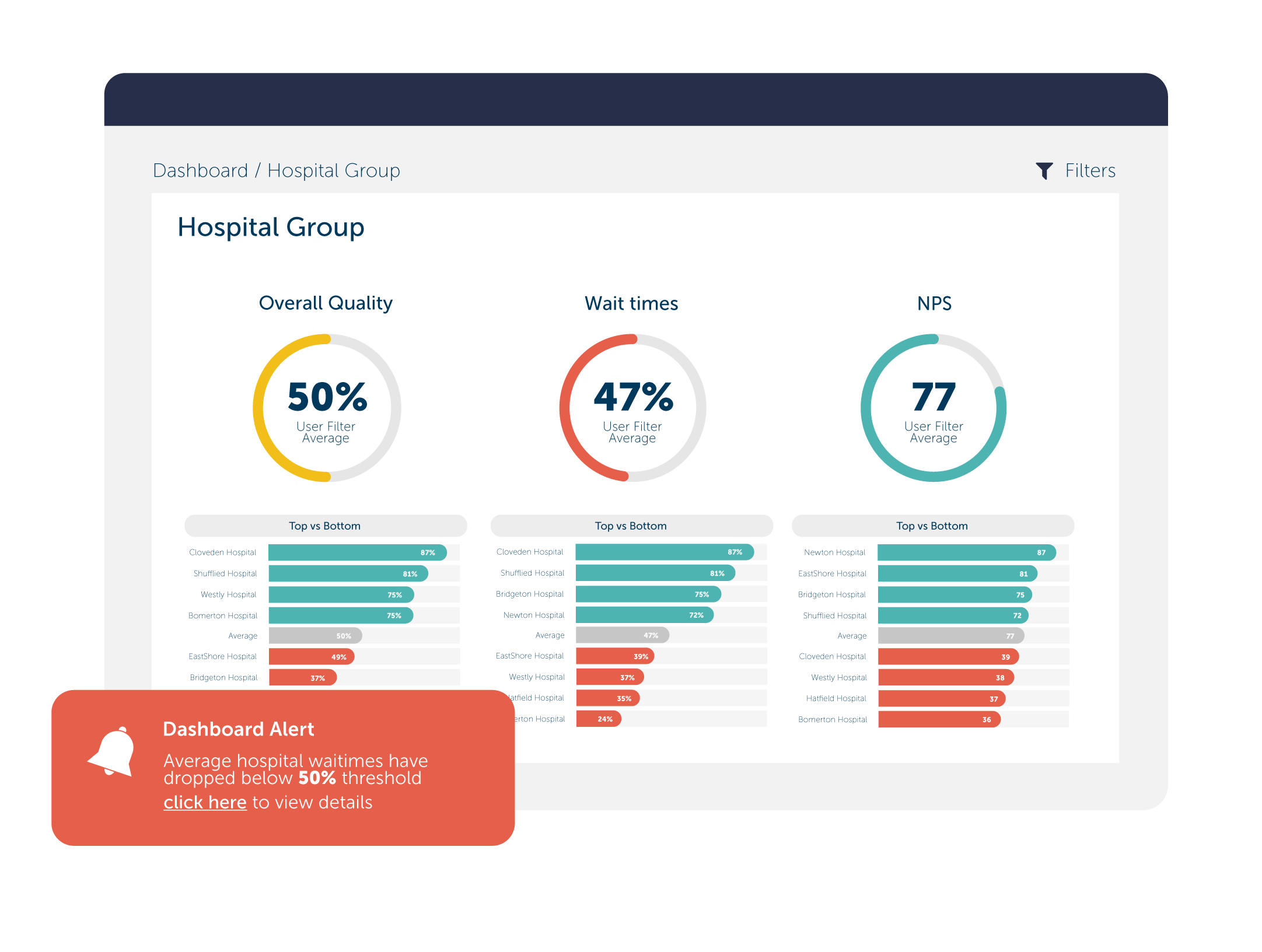We get to the heart of the matter
We empower you to ask the questions that matter to your patients so you can unlock actionable insight that drives constant improvement.

Listen
Gather consistent feedback from every single one of your patients through easy-to-use, multi-channel PREMs surveys.

Learn
Partnering with our expert analysts and using our powerful dashboards, interpret the data to identify important learnings, comparing against our client-wide benchmarks.

Act
Use those learnings to drive your constant improvement initiatives, elevating the patient experience and delivering better outcomes for all.
We help you build a systematic and active approach to improving patient experiences.
- Capture feedback from all your patients, quickly and easily.
- Aggregate data across locations, departments, teams and clinical pathways.
- Empower your delivery teams with stronger patient insight.
- Prove the effectiveness of your patient experience initiatives.
- Get actionable insight into variation in performance.

We help you build a systematic and active approach to improving patient experiences.
- Capture feedback from all your patients, quickly and easily.
- Aggregate data across locations, departments, teams and clinical pathways.
- Empower your delivery teams with stronger patient insight.
- Prove the effectiveness of your patient experience initiatives.
- Get actionable insight into variation in performance.

More than just the technology
With Cemplicity you get access to a team who are passionate about moving the world towards a patient-centric health system. We stop at nothing to deliver results, and our team of PREMs experts are there to help you every step of the way.
We have the experience and sector knowledge to drive real impact. You can be sure that working with us, together we’ll make a meaningful difference.
More than just the technology
With Cemplicity you get access to a team who are passionate about moving the world towards a patient-centric health system. We stop at nothing to deliver results, and our team of PREMs experts are there to help you every step of the way.
We have the experience and sector knowledge to drive real impact. You can be sure that working with us, together we’ll make a meaningful difference.



